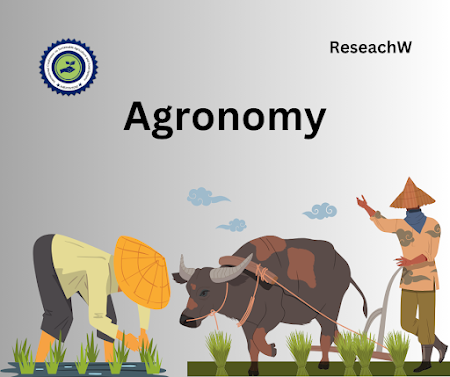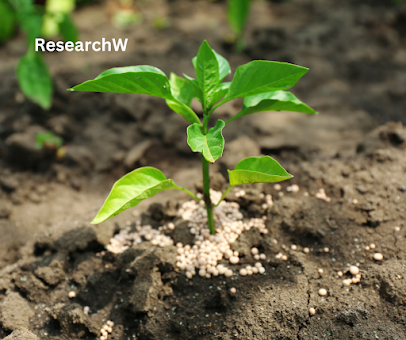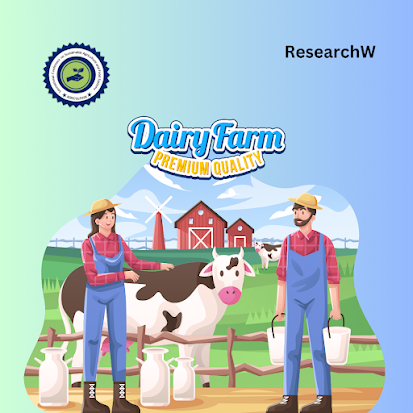Posts
Showing posts from September, 2023
7th Edition of International Research Awards on sustainable agriculture ...
- Get link
- X
- Other Apps
Agronomy
- Get link
- X
- Other Apps

Agronomy is a branch of agricultural science that focuses on the study and management of crop plants and their production. It encompasses a wide range of topics related to crop cultivation, including soil management, crop selection, planting techniques, crop nutrition, pest and disease management, irrigation, and overall crop production and improvement. Agronomists, who are experts in agronomy, work to optimize agricultural practices to ensure sustainable and efficient crop production. They aim to increase crop yields, improve crop quality, and reduce the environmental impact of agriculture. Agronomy plays a critical role in addressing global food security challenges by developing and implementing techniques and technologies that enhance agricultural productivity. #Agronomy: The general hashtag for all things related to agronomy. #CropScience: Focuses on the science behind crop production and management. #SoilHealth: Pertains to topics related to soil management and improving soil hea...
Soil Fertility
- Get link
- X
- Other Apps

Soil fertility refers to the ability of soil to provide essential nutrients to plants and support their growth and development. Fertile soil contains a balance of physical, chemical, and biological properties that make it conducive to plant life. Here are some key factors that contribute to soil fertility: Nutrient Content: Fertile soil contains an adequate supply of essential nutrients such as nitrogen (N), phosphorus (P), potassium (K), calcium (Ca), magnesium (Mg), and trace elements like iron (Fe) and zinc (Zn). These nutrients are essential for plant growth and are typically derived from organic matter and mineral components in the soil. #SoilFertility #HealthySoil #SoilHealth #FertileSoil #SoilNutrients Nomination Link: https://x-i.me/nomd1
Dairy Farming
- Get link
- X
- Other Apps

Dairy farming is a branch of agriculture that involves the raising of dairy cattle and the production of milk and dairy products such as cheese, yogurt, butter, and cream. It is an essential component of the food industry and provides a significant source of nutrition for people worldwide. Here are some key aspects of dairy farming: Dairy Cattle: Dairy farms typically raise specific breeds of cattle known for their milk production capabilities. Common dairy cattle breeds include Holstein, Jersey, Guernsey, and Ayrshire. These cows are selected and bred for their ability to produce large quantities of milk. Milk Production: The primary goal of dairy farming is to produce high-quality milk. Dairy cows are milked regularly, often twice a day, using milking machines. The milk is then stored and transported to processing facilities. Feeding and Nutrition: Proper nutrition is essential for dairy cows to maintain their health and milk production. Dairy farmers provide a balanced diet that inc...
Apple Farming
- Get link
- X
- Other Apps

Apple farming is the process of cultivating apple trees to produce apples for consumption and commercial purposes. Apples are one of the most popular and widely grown fruits in the world. Here are some key aspects of apple farming: Selecting the Right Location: Apple trees require specific climate conditions to thrive. They prefer areas with cold winters and warm summers. Apples are grown in many regions worldwide, but some of the major apple-producing countries include the United States, China, India, and Poland. Choosing Apple Varieties: There are thousands of apple varieties available, each with its own flavor, texture, and intended use. Farmers select the apple varieties that are best suited to their climate and market demands. Preparing the Soil: Before planting apple trees, it's essential to prepare the soil. This involves soil testing to determine its pH, nutrient content, and drainage capacity. The soil should be well-drained and rich in organic matter. Planting Apple Trees...
Manure
- Get link
- X
- Other Apps

Manure is organic material that is used to fertilize soil and improve its fertility. It is a valuable resource in agriculture and gardening because it provides essential nutrients to plants and improves soil structure. Manure can come from various sources, including livestock, poultry, and even composted organic materials. Here are some key points about manure: Types of Manure: There are several types of manure, each with its own nutrient content and characteristics. Common types include: Animal Manure: This includes manure from animals like cows, horses, pigs, chickens, and goats. Different animal manures have varying nutrient profiles. Green Manure: Green manure is made from fresh plant material, such as legumes or cover crops, that is plowed into the soil before it decomposes fully. It adds organic matter and nutrients to the soil. Composted Manure: Manure that has undergone a composting process is more stable and less likely to contain harmful pathogens. Composting also helps...
Irrigation
- Get link
- X
- Other Apps

Irrigation is the artificial application of water to land or soil to assist in the growth of crops and vegetation. It is a crucial agricultural practice that has been used for thousands of years to ensure the availability of water for plants in areas with insufficient or irregular rainfall. Irrigation systems are employed to control the distribution of water, ensuring that crops receive the right amount of moisture at the right time. #Irrigation #FarmLife #Agriculture #WaterManagement #DripIrrigation Nomination Link: https://x-i.me/nomd1
Root Rot
- Get link
- X
- Other Apps

Root rot is a plant disease caused by various fungi, and it primarily affects the roots of plants. It is a common problem in both indoor and outdoor plants and can lead to significant damage or even death of the affected plants if not addressed promptly. Here are some key points about root rot: Fungal Causes: Root rot is typically caused by various soil-borne fungi, with the most common being species from the genera Phytophthora, Rhizoctonia, and Fusarium. These fungi thrive in wet and poorly drained soil conditions. Symptoms: The symptoms of root rot can vary depending on the plant species and the severity of the infection. Common symptoms include wilting, yellowing of leaves, stunted growth, and a general decline in the health of the plant. As the disease progresses, the roots become discolored, mushy, and eventually decay. Environmental Factors: Root rot is often triggered by excessively wet or poorly drained soil. Overwatering, heavy rainfall, or inadequate soil drainage can ...